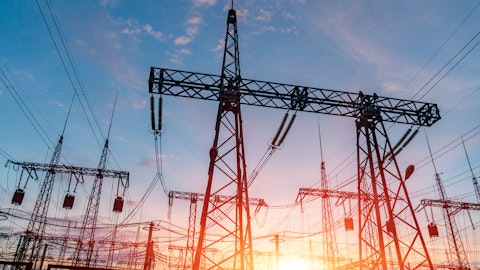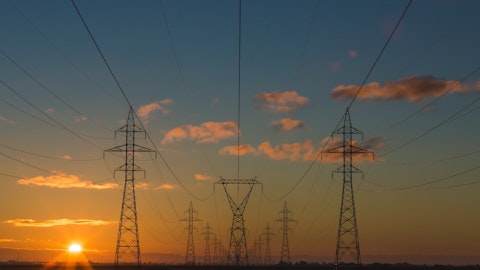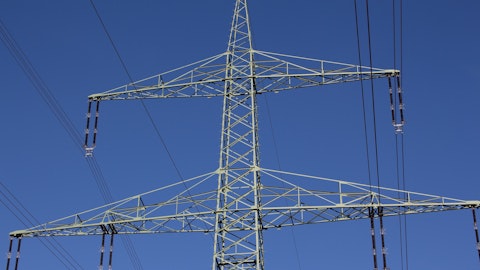Sam Schwartz: Excellent. And then just on interest rates, could you provide some color on what’s embedded in your plan? And what kind of offsets your kind of expecting in ’23 and beyond?
Roberto Bel: Yes. This is Roberto again. Our guidance incorporates already the current interest rate environment. So these higher interest rates we’re facing right now and the current projections from the market on interest are embedded in our plan. So that’s already in. We don’t see any risk with that right now.
Operator: Our next question comes from Michael Gaugler with Janney Montgomery.
Michael Gaugler: Steve, I’d like to get your thoughts on the New England gas supply situation and how that could play out for the Energy Services segment, we’ve had Joe Nolan with Eversource actually writing the White House asking for a relief in terms of the Jones Act to get more gas into New England, if that’s possible?
Steve Westhoven: Yes. Mike, I think certainly, it’s a constrained market up there and all evidence points to it, not only the letter that was written, but the pricing associated ahead of the winter period. I guess the way I’d address that, we’re not in New England. We don’t participate in that market from a utility perspective and from a trading perspective. I couldn’t comment on how much of the book is up there. But overall, I think the general direction is that the gas industry has some constraints in these assets that we own, not only our utility but our sort of transportation assets are extremely valuable and certainly, the contractual assets that we hold in Energy Services as well. So it sets up nicely for our infrastructure businesses and being able to take advantage of that, and you saw that last year provides for outsized returns as well.
So we’re looking forward to the winter. We’re prepared for it. We understand the risks associated with it and we like the infrastructure that we have.
Michael Gaugler: Okay. And maybe just as a follow-up to that. I’m wondering what — how are you thinking about it this year versus last year? Are there better opportunities this year versus last year given what we’re seeing?
Steve Westhoven: We look at our businesses and certainly how to quantify those opportunities and the risks and how they’re embedded in our earnings and projections going forward. We try to take a baseline and put that as a projection to speculate on how big those opportunities are. That’s extremely difficult. We look at our earnings and the performance and really try to stay in the fairway of a certain risk profile that I think would be acceptable to our investors. So we can provide a nice base of earnings and give them a potential upside. And we’ve proven that year and year again. Sometimes the upside comes, sometimes it doesn’t, but we’ve got a very strong base of earnings, and that’s what we project going forward.
Michael Gaugler: Okay. That wasn’t actually where I was going with the question. Maybe I can rephrase it. As you look at the market, does it appear more constrained this year versus last year? That’s probably the way I should have asked the question.
Steve Westhoven: That’s hard to say without getting to like a very detailed supply and demand side of the market. But certainly, as the natural gas markets and all these markets continue to grow, and you’ve got a slowdown of some infrastructure being put in place. You could say that. Weather is a big variability exports or big variability. There’s a lot of variance around variability that comes to this market.
Operator: At this time, we have no further questions. I’ll pass the call back to management for any closing remarks.
Adam Prior: Thank you, Emily. I’d like to thank all of you for joining us this morning. As a reminder, a recording of this call is available for replay on our website. And as always, we appreciate your interest and investment in NJR. Thank you, everyone.
Operator: Thank you, everyone, for joining us today. This concludes our call. You may now disconnect your lines.
Follow New Jersey Resources Corp (NYSE:NJR)
Follow New Jersey Resources Corp (NYSE:NJR)
Receive real-time insider trading and news alerts





